How adapted vehicles have changed since 1946
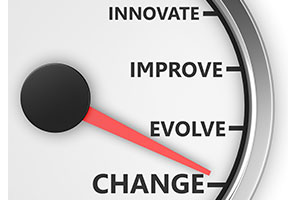
Our independence is everything. Indulging in a bit of retail therapy or a trip to the football watching your team win or, regrettably, lose — it’s something we all need. And adapted vehicles play a huge part in this for people who have disabilities. In the UK today, around 20% of the population are registered disabled, with just under half of that figure wheelchair bound. The journeys that we make each and everyday are simply not possible for some of those people without assistance from someone else. Technological advances within the motor industry have increased tenfold since the turn of the millennium. Now, in 2019, driverless cars, a concept that seemed like a pipe dream way back when, could finally be paving way on the roads of the UK. Here with Lookers Ford, registered dealers of Ford Motability cars, we look at how the engineering and technological developments of adapted vehicles has, and can still, impact the life of those living with disabilities. History Back in 1946, the NHS was beginning to find its feet, simultaneously as hundreds of thousands of injured service men and women returned from the war. Bert Greeves, a French-born engineer and motorcycle enthusiast, invented the very first accessible motor-driven trike, to give some form of independence back to his cousin Derek. These vehicles were designed for one person and certain models could reach up to 82mph – alongside the isolation these vehicles brought, they also weren’t particularly stylish, with even their owners referring to them as ‘noddy cars’. Adaptions For someone with a disability, it isn’t just a case of arriving at their local showroom and picking out the car they want based on horse power or it’s in-built surround system. The added extras that could potentially be added are going to be a need rather than a want. For those who have difficulty applying pressure to the standard issue pedals, hand controls such as a push/pull lever can be fitted. Similarly, pedal modifications can be made, allowing drivers to adjust the position of the pedals when hitting the road. Back when Knight Rider appeared on our screens, no one can deny being fascinated, and a tad jealous, by David Hasselhoff’s ability to speak to his car. Voice activation in the car is no longer a concept that you have to pull out your old VHS player for — it’s readily available with a simplistic Bluetooth feature in your car. Have you ever considered how much of a difference this function could make to someone with a disability on their daily journeys? Making a call home, navigating through a busy city centre or even turning the temperature up and down, can all be done via a voice command. Northern Irish woman Alison Lockhart who suffers from spina bifida suggests: “Having a vehicle professionally adapted to suit your needs opens up so many opportunities in employment and social activities, that otherwise would have been virtually impossible.” Alison requires a wheelchair and recently purchased her new car that includes various adjustments including a steering ball. Working more than 20 miles from her house, her life would be completely different without her own car. Front to the Future Having taken a brief look at the past, now let’s assess what the future holds for developments within the motoring industry and how it can further assist the lives of those living with disability. The news as of late is awash with the latest updates of autonomous vehicles – one simply can’t get away from it. Realistically, it won’t be any time soon before we see the arrival of driverless cars on our roads, however the UK government are set to amend the laws regarding the area within the next two years. We have recently seen Google testing their new project, Waymo, labelled the world’s most experienced driver — and it’s a far cry away from Bernard Greeve’s initial development. Reports have already discussed how the cars will reduce the stress of parking, as they find the space for us. Similarly, free time will be in abundance due to the reduced hours spent behind a wheel when we could be doing so much else. But, more importantly, these advances could ultimately provide independence for millions of people across the world otherwise restricted by their disability. The developed technologies touched on above, dating right back to 1946, have proved to be particularly beneficial in aiding those with disabilities to get from the metaphorical A to B. However, the future looks to hold a whole lot more for adapted vehicles.
How driverless cars can assist people with disabilities

With driverless cars gearing up to hit the roads in the months and years to come, the motoring world looks set to experience one of its biggest shifts very shortly. Autonomous car technology is already being looked at by big-name vehicle manufacturers like Lexus and Mercedes, while Tesla has already begun to trial its driverless Autopilot system on UK roads. Google is testing its own automated technology as well, while there are rumours that Apple has teamed up with German car maker BMW to create its own vehicle — there’s speculation that this set of wheels will be automated too. The opinions of the public when it comes to autonomous vehicles are split though. In an independent survey of 10,000 drivers conducted by the RSA Insurance Group, for instance, almost six in ten motorists were excited about the development of driverless cars. However, more than a quarter of respondents raised concerns about whether these types of vehicles can be hacked and would be vulnerable to crashing. Researchers based at Cambridge University’s Engineering Department and the Department of Psychology found feelings to be split when they carried out their own online survey involving 2,850 UK residents too. This is because while 10 per cent of those involved in the survey said that they would definitely use a fully driverless vehicle, another 15 per cent of respondents replied that they definitely would not use this type of automobile. There is the potential for various groups in society to find driverless cars useful though, including the disabled and elderly people. Here, award-winning straight stairlift supplier Acorn Stairlifts goes into further detail about how autonomous vehicles may soon be assisting people with disabilities… Why Waymo’s approach to driverless cars should catch the eye Waymo is certainly gathering some momentum when it comes to the development of autonomous vehicles. A company which started out as the autonomous car division at Google, the firm’s driverless cars have already been driven at least 3.5 million miles in 22 test cities — with one test seeing a blind man successfully being able to complete a test ride by himself. Several design elements have been incorporated by Waymo while they’ve been working on autonomous vehicles. These features have the intention to help the elderly, as well as individuals with disabilities, when they are heading out on a road trip. For example, there are screens in the cabin of the driverless cars which are approximately the size of a laptop computer’s screen and sure to prove handy to individuals on-board the vehicle who are hearing-impaired. This is because these screens allow individuals to follow a route, as well as view selected information such as any traffic signals, crosswalks, pedestrians, cyclists and other road users encountered while getting from A to B. We must also mention the buttons found on the dashboard of a Waymo driverless car. People who are familiar with cars which have rolled off production lines over the past few years are likely to have already come across a ‘Start’ button. However, Waymo vehicles also come complete with a ‘Pull Over’ button and a ‘Help’ button that will begin a two-way voice communication connection with a control center when pressed. The time until you’re enjoying a ride aboard a driverless car may not be long away either. After all, Waymo launched the world’s first commercial driverless car service recently! The general vibe about driverless cars So, we could be just weeks if not only a few days away from beginning to share the road with autonomous vehicles. What is the general vibe around this technology? Chris Grayling, Britain’s Transport Secretary, believes that the lives of the elderly and the disabled can both be transformed once self-driving cars begin rolling off production lines. Promoting the benefits of this new form of transport on both the economy and society in a speech made at the Association of British Insurers’ annual conference in London, Mr Grayling said: “The potential benefits of these new technologies for human mobility — and for wider society — are tremendously exciting. “Many who can’t currently drive will be able to take to the road. Elderly people or people with disabilities which prevent them from travelling today will discover a new sense of freedom and independence.” Another benefit of driverless cars acknowledged by the British Transport Secretary is that “self-driving cars should make road travel far safer by eliminating the biggest contributory factor in accidents today — human error”. Across the Atlantic earlier this year, the executive vice president of the American Association of Retired Persons (AARP) Nancy LeaMond stated that elderly people must remain in mind during the design stages of autonomous vehicles. “This is a critical part of livable communities as we talk to mayors and other officials around the country,” Ms LeaMond explained while speaking as part of a AARP panel discussion at the North American International Auto Show. “To be successful, people of all ages will need to trust the machine to do the driving and right now there is a very significant trust gap. A full three-quarters of U.S. drivers of all ages report feeling afraid to ride in a self-driving car.” Elizabeth Macnab, from the Ontario Society of Senior Citizens’ Organizations, was also part of the same AARP panel discussion. She pointed out that there are a few considerations which must be made to ensure driverless cars are indeed appealing to people with disabilities and the elderly, including: 1. The vehicles should be affordable to people on a fixed income. 2. The vehicles should be accessible to people who need to use mobility aids and walking devices to get around. 3. The manufacturers of autonomous vehicles should commit to providing training about how to correctly use a driverless car. The introduction of autonomous vehicles certainly seems to be a change in the motoring world that we should all back, especially if they do indeed help the elderly and people with disabilities. Sources: washingtonpost.com dailymail.co.uk autotrader.com cbc.ca drivesweden.net alphr.com ukautodrive.com rsagroup.com
Into the Frame – new wheelchair fencing book promotes sport
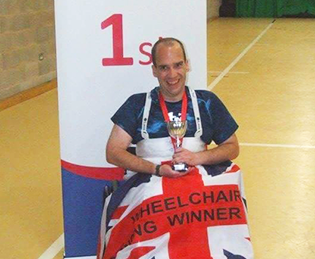
We caught up with author of a new book, Into the Frame, to chat about his love for wheelchair fencing. Jonathan David Collins spoke to our editor and is keen to promote the sport as it helps boost physical and mental health and wellbeing – yet few people know it even exists. Jonathan said: “I was born with Spina Bifida and Hydrocephalus and I have been in a wheelchair since I was 18 months old. “I used to do a bit of swimming but due to an operation I had, it was advised I gave it up. “A friend of mine who was a wheelchair fencer fenced at a club near me, so I went to the club and became hooked on it when I started to learn.” The book gives an insight into the sport of wheelchair fencing, and charts Jonathan’s experiences as he takes up the sport – giving advice from etiquette to what to wear, and hearing from those who have competed at a national and even a global level including Piers Gilliver (Paralympic silver medallist) and Dimitri Coutya (double World Champion in 2017). In the book Alan Sheriff, who is the British Disability Fencing board member for development, says: “It’s a sad fact that few people have heard of wheelchair fencing; despite it enjoying the most successful period in its history in Great Britain over the last few years. “How – when we have a double World Champion, Paralympic silver medallist, dozens of World Cup medals and two No.1-ranked fencers in the world – does no-one know of ‘our’ sport?” So what would Jonathan say to anyone thinking of taking up the sport? “I would say come and join in and have a go – it is good for your mental state and for your physical health,” he says. Jonathan credits wheelchair fencing with changing his life, and says it is a suitable sport for most disabilities. He recommends finding a local club by contacting the BDF (British Disability Fencing) website. As for the future, Jonathan says he is looking forward to entering more fencing competitions, as well as promoting his book Into the Frame, which is available from Amazon priced £13.74 (or £9.99 on Kindle). Find Jonathan on social media: Facebook Instagram Twitter Youtube Photo caption: Jonathan after winning in Mixed Sabre, Novice Challenge at the BDF National Championships. Jonathan also won joint bronze in the Mixed Foil at the same event in June of 2018.
Mark Lane: Gardening tips for people who thought they could never garden
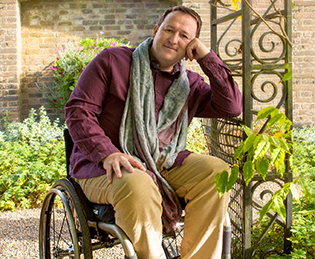
Mark Lane, wheelchair user and presenter of the award-winning BBC Gardeners’ World, as well as the RHS Flower Shows, discusses getting out into the garden and how to make gardening easier if you have mobility issues… It doesn’t matter what level of ability you have, you can still enjoy gardening. Gardening makes you feel safe and secure and it has a positive effect on mental and physical wellbeing. With these simple tips you can get outside, enjoy nature, be alone for personal reflection or socialise with family and friends. Gardening tips 1. Think about your limitations and how you may have got around an issue unrelated to gardening, ie how to pick something up from the floor – solution, use a grabber. This can be used to reach or to hold a plant. If I cannot get to the plant, I bring the plant to me. 2. Use lots of portable camping tables of differing heights – these can be assembled around you when planting and sowing. Non-slip surfaces are better as are tables with a lip to help stop a pencil from rolling off. Also, consider all-terrain trolleys or a hand cart. 3. Find a comfortable place to sit, somewhere out of the wind and in shade to do some gardening. Keep hydrated, carry pills with you, sunscreen and a snack. 4. Compost bags are heavy and it is uneconomical to buy smaller bags. Ask someone to help open a bag of compost and using a scoop transfer the contents into a bucket. 5. Soil as a muscle strengthener – I’m not suggesting that you eat soil, but squeezing soil in your hands starts to strengthen your hand and arm muscles, and bare hands in soil releases serotonin to the brain, making you feel better. 6. Pace your activities, especially if you tire quickly. Set a timer to 5 minutes. Try working for this period-of-time and then rest for 5 minutes, repeat. It is better to do things in shorter time periods with gaps in between than it is to work solidly for 30 minutes, after which you will probably be exhausted. 7. Find the right tool for the task. Long handled, lightweight tools are great but try them out in the shop. Long-handled tools are great for people in wheelchairs and for people who cannot bend or kneel easily. The ones with interchangeable heads are a good idea. 8. If you have difficulties with dexterity, then consider ergonomic tools. From moulded handles that sit comfortably in your hand to rotating handles (ie secateurs). Also look at relief grip bionic gloves, which help improve dexterity. 9. Use a vertical planter or raised planting table to bring the plants up to a manageable height. You can either position your wheelchair or mobility scooter underneath or position a chair ready to sit and enjoy sowing, planting and harvesting. Raised tables do not have a lot of depth, but you can still grow salad crops, as well as herbs and alpine plants 10. Think about using pots. Half fill a pot with polystyrene and top up with soil. This will keep the weight down. If arranging pots together, turn a couple of empty pots upside down and position your planted pot on top. You can create a whole garden with a combination of pots. 11. Use clear plastic tubing to sow seeds in borders or on allotments. Cut to a comfortable length, either from a seated or standing position without the need to bend. Make planting holes in the soil either with a bamboo cane, position the tube above the hole and drop a seed into the top of the tube. Let gravity do its thing and with minimal effort a seed is planted in the hole. Either using the cane or a long-handled tool cover the seed with soil. See marklanedesigns.com for more information on Mark Lane’s work. For more on accessible gardens, click here.
AJM Healthcare – providing services to wheelchair users for 35 years
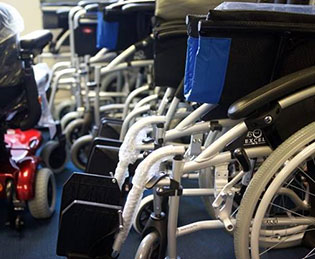
AJM Healthcare provide services to wheelchair users, offering not only a repair service but advice and training. Here, UCan2 editor Victoria Galligan finds out what makes the company such a hit… AJ Mobility started as a small family business 35 years ago providing adaptations for customers in Sussex. Successfully developing the business and supporting our disability community, we grew to provide the NHS and local authorities with equipment service solutions. Following a change of ownership in 2011, we became AJM Healthcare and transformed our services. Today AJM Healthcare delights customers with full integrated wheelchair to nine Clinical Commissioning Groups and provide approved repairer and community equipment services across the country. Our team work closely to provide local service maintenance and equipment supply solutions to the public and business to support their mobility and access needs. We have seen that the needs of our client group have changed significantly over recent years. With more people living longer with more complex health conditions, coupled with an increased desire to support personal “choose and control”, it is driving a change in services that are tailored to each individual’s needs. AJM Healthcare is empowering our customers with opportunities to upgrade and personalise their products and services to suit them. We support our mobility clients with helpful hints and training in the use of their wheelchair and equipment when they are out and about. We also encourage our more confidence users to share their positive experiences with new users so that “life hacks” can be gleaned. We still have a way to go before society looks past the person’s disability and truly makes the world accessible, but it is improving all the time. What makes us better than our competitors? AJM Healthcare just gets it right more often. We are not perfect, we do make mistakes, but we learn from them, adapt our approach for the next time. We are a dynamic organisation with strong ethical and financial standing, supported by an experienced management team with passion and dedication to providing excellent customer centred service delivery. For more information on AJM Healthcare click here. WESTBRIDGE CAPITAL, which typically invests in medium sized enterprises, recently backed a management buyout of AJM Mobility Limited (t/a AJM Healthcare), which provides mobility and equipment solutions to the NHS, Local Authority Partners and individuals across the UK.
Italian restaurant aiming for Autism Friendly award

A restaurant in Manchester has become a hit with parents of children with autism and other conditions after adapting its menu, and staff plan to make the eating experience even more enjoyable for families. The San Rocco Italian restaurant in Ashton-under-Lyne is now working towards being recognised by the National Autistic Society by becoming recognised as “Autism Friendly”. It hit headlines earlier this year when its pictoral menu, designed for non-verbal autistic children, allowed families to come and choose food without guessing when their children wanted. Now manager Mark Waine wants to photograph the food to add to the menus, so children can see exactly what they will be getting when they order. He also plans to photograph staff so autistic diners can see who might serve them when they come for a meal. Mark said San Rocco’s website has photographs of the inside and outside of the restaurant, which helps children picture where they’ll be going for a meal. Mark said, “I have children myself and of course everyone needs to go out sometimes. My children make noise too! Our autistic customers sometimes make noise but it doesn’t mean their families should have to stay in all the time. It’s not a big deal for us.” Two parents who have championed the restaurant are Nicola and Lee Sweeney, whose eight-year-old son has autism and learning difficulties. Lee said, “After feeling that we were not wanted at restaurants in the past, we stumbled on San Rocco. From the moment we walked in we knew how understanding and how accepting the staff were of people with disabilities. “After being customers there for sometime, Mark approached us with his idea of making a picture menu for children and adults with autism and learning difficulties. “We were overwhelmed with the idea. Mark enlisted the help of a speech and language therapist and now the menu is helping many others like our son. Mark is now working with a teacher from the special needs school that our son goes to and is working towards the Autism Friendly Award – it’s amazing.” As well as developing the menu, Mark said the staff will ask if a family would like to have the lights dimmed in the are they are eating, or if they need to sit at a particular table. There are fully accessible toilets too. San Rocco was also involved in raising money for the Autistic Society at its summertime ball in June, and staff have supported children with GM1 disorder – a genetic condition which destroys nerve cells. For more information on autism-friendly restaurant San Rocco, see the website.
Making Headway by improving brain injury awareness
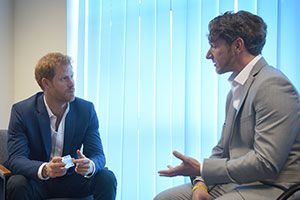
Brain injury charity Headway support people in the community following head traumas. Here, we speak to Headway’s James Coxon about the charity’s ID cards which can help aid communication between the brain injury survivor and people they meet in everyday life… Could you tell us a little about the Headway charity and its work? Headway, the brain injury association, supports people affected by acquired brain injury through a wide range of services including rehabilitation programmes, carer support, social re-integration, community outreach and respite care. We provide a free-to-call, nurse-led Helpline which provides a confidential service available to anyone with a question about brain injury – from brain injury survivors and carers to students and professionals. We also have an award-winning range of publications on the effects of brain injury. Our Emergency Fund provides grants of up to £500 in the immediate aftermath of brain injury, to help adult brain injury survivors and their families cope with the sudden practical implications. We also have a network of 127 groups and branches providing local services to brain injury survivors, families and carers. We created the Headway Brain Injury Identity Card which helps people communicate about their disability, especially if this is hidden. Launched in England by HRH Prince Harry in 2017, the card is supported by the National Police Chiefs’ Council Police Scotland, Police Service of Northern Ireland and a range of other organisations. The brain injury card is useful in all situations, including public transport, shops and if the police are ever called. Why are brain injury survivors at risk of being arrested? Brain injury is widely misunderstood in all facets of society and those working in the criminal justice system are certainly not alone in struggling to identify and appropriately support those affected. A brain injury is known as a hidden disability that can affect a person’s control of their anger and emotions; lead to problems with memory and concentration; and can impair a person’s ability to process information or communicate effectively. Brain injury survivors can find themselves coming into contact with the criminal justice system as victims, or after being arrested. This can be as a result of their disabilities not being recognised or understood. Some brain injury survivors are assumed to be drunk as a result of having slurred speech and/or an unsteady gait, with attempts to explain the effects of their brain injury often being ignored. It is vital, however, that vulnerable adults living with the long-term effects of brain injury are identified at the earliest possible opportunity. What information do the Headway ID cards hold? The ID card includes an individual photo of the brain injury survivor and lists four of their key symptoms. It provides access to a unique 24-hour criminal legal helpline managed by a firm of solicitors trained in understanding brain injury. In England and Wales the card displays the logo of the National Police Chiefs’ Council (NPCC) and in Scotland the card displays the Police Scotland logo. This gives the card credibility, especially if shown to the police, and means it will be easily identifiable by officers. The initiative also has the full backing of the Police Service of Northern Ireland (PSNI). Can anyone get a Headway ID card, and how do you apply for one? The card is available to anyone in the UK aged 18 and over who has a verifiable brain injury. To apply you need to visit our website and you will require a clinical verification of brain injury and a photo, as well as some information about how your brain injury affects you. A similar card for children and young people aged between 11-17 is provided by the Child Brain Injury Trust. For more information, see the Headway brain injury charity website here. Photo: Prince Harry with Dominic Hurley, a brain injury survivor and Headway ambassador
Assynt Crofters’ Trust launches its new Scottish Wheelyboat
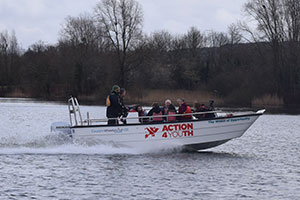
This year is the 25th anniversary of the Assynt Crofters’ Trust taking ownership of the beautiful North Assynt Estate in the Highlands of Scotland, comprising of 21,300 acres with over 200 lochs. As part of a week-long celebration, the Trust will launch their new Coulam 16 Wheelyboat on Loch Drumbeg. The lochs are only accessible to the fit and able-bodied and therefore Assynt Crofters’ Trust is launching their new Wheelyboat to be able to offer all the Trust’s visitors, regardless of age or ability, the opportunity to fish and watch wildlife in this stunning setting. The fully accessible Coulam 16 Wheelyboat will be launched on Saturday 30 June, as part of a day’s fishing competition for all anglers to be involved in, either on shore, or on the boat. The purpose-built fishing boat is ingeniously modified for wheelchair access and is an essential facility on larger waters. This project with Assynt Crofters’ Trust is an important development, as it will create opportunities for mobility impaired anglers in a remote and pristine environment fishing for wild brown trout. Anglers will not be the only beneficiaries, however, as the Wheelyboat will also play an important role as an accessible boat for wildlife tourism. This joint project with Assynt Crofters’ Trust and The Wheelyboat Trust would not have been possible without the fundraising efforts of both charities. The Wheelyboat Trust contributed almost half of the total funds and provided a total of £5,000 from grants raised from Anne Duchess of Westminster’s Charity, Christina Mary Hendrie Charitable Trust, Mr J Collins, Mrs J Howman, JTH Charitable Trust, Lord Leverhulme’s Charitable Trust, Souter Charitable Trust, Sylvia Aitken Charitable Trust and Mr K Williams. Assynt Crofters’ raised their contribution from Assynt Fly Fishing, Living the Dream, Pudding Boy Productions, Scottish Hydro Electric and Scottish Water. Assynt Crofters’ Trust manages many of the lochs for trout and salmon fishing and fishermen return year after year, as the fish are wild and in great condition. As well as the fishing, there is the unrivalled opportunity to spot wildlife such as red deer, pine martens, golden eagles and red and black-throated divers. Wheelchair users and those who cannot walk long distances will now be able to access the beautiful Loch Drumbeg, with its many tree clad islands and wild brown trout, providing some of the most appealing fishing and wildlife-watching opportunities around. Developed by The Wheelyboat Trust and Coulam Ltd boatbuilders, the Coulam 16 Wheelyboat easily accommodates two wheelchair users and a companion/boatman. The wide open deck is accessible throughout and disabled anglers can drive the boat. Boarding is via a ramp from the bank, or a pontoon, onto a hydraulic platform and removable handrails keep the angler secure while boarding and disembarking. Andy Beadsley, Director of The Wheelyboat Trust says, “There is so much more to fishing than just catching fish – being able to take part easily, safely and often independently are important factors that benefits Wheelyboat users’ mental and physical health and well-being. The Coulam 16 Wheelyboat looks and performs like all other fishing boats, providing the performance of a purpose-built angling boat, but also being able to be used by anyone, disabled or not, appealing to all as a genuinely dual-purpose craft. This is extremely important for us at The Wheelyboat Trust – giving disabled people the same and equal facilities of the able-bodied. It is fantastic to see a Wheelyboat at Assynt Crofters’ Loch Drumbeg as it is a stunning location that can now be able to be enjoyed by all.” Ray Mackay, Vice Chair of the Assynt Crofters’ Trust said, “The Assynt Crofters’ Trust is celebrating the 25th anniversary of taking ownership of the North Assynt Estate this year. We have managed to keep the entire estate together and enabled the ordinary people who live and work on the land some control over their own economic future. The lochs on the Estate are absolutely stunning and the addition of our new Wheelyboat gives everyone the ability to enjoy and utilise this amazing environment. It is also wonderful to see the freedom a Wheelyboat gives all its users, from the less mobile and disabled, to the young and elderly. This launch will be the first event in a series to celebrate 25 years of the Assynt Crofters’ Trust.” The Wheelyboat Trust relies on the support of individuals, companies and charitable organisations to fund its activities. Donations can be made in a variety of ways including online at www.wheelyboats.org/donate.html. About Assynt Crofters’ Trust In 1989 Edmund H Vestey renamed the coastal crofting strip – comprising thirteen townships and a total area of 21,300 acres (9,000 Ha) – as North Lochinver Estate and sold it for £1,080,000 to a Swedish land speculator. In none of these transactions were the interests of the people who lived and worked on the land considered to be relevant. In 1992 Scandinavian Property Services Ltd went into liquidation, with a Swedish bank as the main creditor. The estate which had been sold to Scandinavian Property Services in three lots was now to be broken up into seven lots, no concern being shown for the impact of this process on the crofting activity of the inhabitants. Within three months, a feasibility study and business plan had been put together with financial help from the Crofters’ Union and Caithness & Sutherland Enterprise and so the Assynt Crofters’ Trust came into being. On July 1 there appeared the first of many reports in the national press about the audacious attempt of a few motley crofters in the remote NW Highlands to win back the land of their forefathers. The campaign caught the public imagination, donations began to roll in and negotiations began in earnest with the Liquidators. After having had two offers to purchase the Estate rejected by the selling agents, a deal was agreed in December 1992 – almost exactly 6 months after the original public meeting. The Assynt Crofters’ Trust is the owner of the North Assynt Estate which consists of some 21,000 acres and includes
Have you got the Changing Places Toilet Finder app?
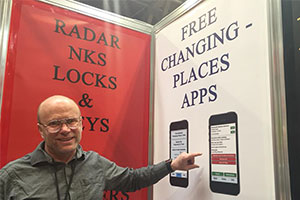
Tom Gordon, who has a background as a master locksmith, produces RADAR keys for accessible loos and has developed an app to find your nearest Changing Places. Here, he speaks to UCan2 editor Victoria Galligan about why the UK falls short when it comes to Changing Places… What are the different types of accessible toilets and what is the difference between them? (Changing Places, disabled access, Space2Change etc) Disabled Toilets are correctly called “Accessible toilets” but not all accessible toilets are the same. Changing Place toilets have been designed for use by people who have a carer and include a full-size changing bench, a hoist and a peninsular toilet. Changing Places “U” toilets and Space2Change toilets are similar but don’t have all the features of the full Changing Places standard. Changing Places are NOT normally available for independent disabled people who can use a standard accessible toilet. How many of the accessible toilets do we have in the UK? There are 20,000-30,000 accessible toilets and 1,400 Changing Places in the UK, but there are never enough – partially because many councils are saving money. A dozen more are being built every month. Wales is particularly short of facilities. Which accessible toilets are locked, and do radar keys open all locked loos? There is no standard which demands public accessible loos are locked with a RADAR lock but the vast majority do use them, if they are locked. It all depends on the toilet provider –some have a local key or a code or an intercom or a card. Some you have to pay for entry. Our phone apps tell you how to get in to each loo at www.loo.org Eire and Europe and Australia all have their own National Key Scheme key –links from www.loo.org How much are the keys and what makes your keys a quality product? We have discontinued the steel keys which we supplied to RADAR for 25 years (until the charity shut down). They all still work all the locks but our new solid brass keys are improved in three main ways: • The unique raised rim to the head gives much better grip. • The computerised keycutting and other manufacturing and design improvements give a more reliable key, but we still have a master locksmith check every single key on two RADAR door locks (not the simpler mechanism of the padlock) to ensure that when a disabled person is outside the only toilet nearby which is suitable for them, they can reliably get inside. • It looks pretty, which is not irrelevant – why should a disabled person be forced to have an ugly product? They only cost £2.50 plus postage and discounts are available for bulk orders too! from www.radarkey.org Tell us about your app… Our fully checked app Changing Places Toilet Finder – which also includes Spaces to Change – are up and running. You can get the links from www.loo.org. We will be doing apps for UK public toilets and accessible toilets too. The website has the same data as the phone apps but the larger screen and power etc means that we can add extra features compared to the app. They all show where 1,400 Changing Places are, who can use them, opening hours, how to get there, how to find the toilet once you are there, how to get in and if it doesn’t comply with the full CP specifications, how it falls short. It even tells you the time of the next train or bus to get there. Why do you offer free signage for accessible loos? It seems to be a universal problem that public toilets are not well signed, so which means it can be: • Difficult to identify them, even when you are nearby. • Not clear who is meant to use each type of toilet. • Not clear what key etc is needed. • Difficult to find out about other toilets. • A mystery who to report faults to. Our FREE A4 door signs for all UK accessible toilets (not just ones with a RADAR lock) cover everything that a user needs to know, in an individually laser cut, nationally standardized format of sign. As we do business with most of the toilet providers, it was easy for us to contact the right people to get the necessary information and then use our existing skills and technology to solve this problem. For anything you need to know about public accessible loos including Changing Places, go to www.loo.org